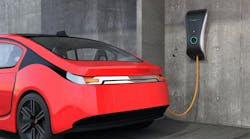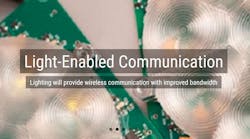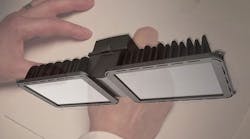Smart lighting’s rising importance was highly visible at last month’s Lightfair International show, but a conversation with one of the leaders of research into the future of smart lighting suggests what we’ve seen so far is just a hint of what’s to come. Understanding how we get from here to there is the work of Robert Karlicek, director of the Smart Lighting Engineering Research Center, based at Rensselaer Polytechnic Institute, Troy, N.Y., and his organization. We caught up with Karlicek by phone just before Lightfair to find out what he’s working on.
“Everybody’s doing smart lighting now, and most of it isn’t very smart. But that’s about to change,” Karlicek said. “It’s hard to grapple with all the ways it’s going to be changing in the next few years.”
The thunderous hype around the Internet of Things (IoT) and the logical prospect of solid-state lighting systems being able to serve as a backbone for communication and monitoring systems connecting devices of every kind has thus far made it hard to separate out what consumers and building managers a few years down the line will consider valuable functionality. For all the predictions of fine-grained user control of their surroundings and the excitement over a new level of engagement, the longer view Karlicek takes looks more to lighting so smart that it fades from our immediate awareness.
“The last thing I want to do is control my lighting with my smart phone,” Karlicek said. “I want it to know what I need and do it without my interaction.”
One of the Smart Lighting ERC’s key areas of focus is on human-centric lighting, which involves the use of dimming, dynamic color tuning and other sorts of control for healthcare and productivity applications. He describes an idea they’re testing at the University of New Mexico for healthcare settings, where if a patient goes to the bathroom and falls down, the nurses can be alerted by the lighting system — no cameras, just an occupancy sensor noting the changes in the way light bounces around.
“We think we can make this a very low-cost system. Now you’re getting away from lighting, and talking about something more like the Jetsons.”
Most of the functionality Karlicek anticipates can be done by solid-state lighting systems with simple occupancy sensors and ambient light sensors built in, and many capabilities will be derived from analyzing the data generated by those sensors.
Karlicek and the Smart Lighting ERC are based at Rensselaer Polytechnic Institute, Troy, N.Y. Rensselaer takes the lead on the program, but funding comes from the National Science Foundation (NSF) and a network of 20 to 30 research labs all over the country take part. Rensselaer, of course, is also home to the Lighting Research Center, which does a lot of work on human factors and lighting, the way we perceive light and color and topics of that nature. The Smart Lighting ERC is all about the engineering research – how things get built. Its projects involve things like solving design and production puzzles in the creation of these low-cost sensors.
If the IoT becomes the technological juggernaut its proponents imagine, we may run into some additional problems in terms of bandwidth. Most of the smart lighting systems on or entering the market use wireless — usually radio frequency — communication technologies, but if every device has an IP address and can talk to every other device, the glut of data flying through the air will create choke points.
For that reason, Karlicek looks for a future when lighting will be powered over Ethernet connections (PoE) and some continuing development on power-line carrier (PLC) technologies that faded from favor when WiFi networks swept through the market. Further into the future he looks to heterogenous network (HetNet) technologies that connect devices with different communication protocols together, regardless of whether they’re connected via local area network (LAN), RF WiFi network, cellular network, visual light communication (VLC) (some call it lighting fidelity (LiFi)) or some other technology.
Wireless protocols are the dominant networking technology being integrated into lighting systems today, and Karlicek believes via further development of protocol standards for Zigbee, in particular, to have a long-term role, but he expects wired connections to become dominant in new construction for bandwidth reasons while Zigbee continues to dominate retrofit applications.
Meanwhile, the opportunities of the lighting industry look set to rise and fall with LED lighting now, and how lighting manufacturers, reps, designers, distributors and installers reinvent themselves as change unfolds will determine winners and losers. The basic arithmetic of lighting will look nothing like what we know now.
Karlicek notes that today the lighting can account for 20% to 50% of a building’s electrical load. The flurry of retrofits (still churning here, but Japan is already seeing LED “socket saturation”) with new LEDs may eventually be able to cut that load to 2%. “What happens when that drops to 2%?” he asks. “All of a sudden things like control become prohibitively expensive because the ROI has gone from years to decades.”











